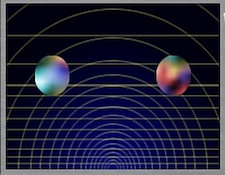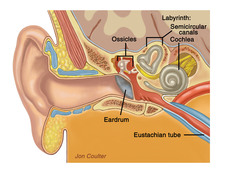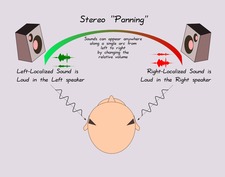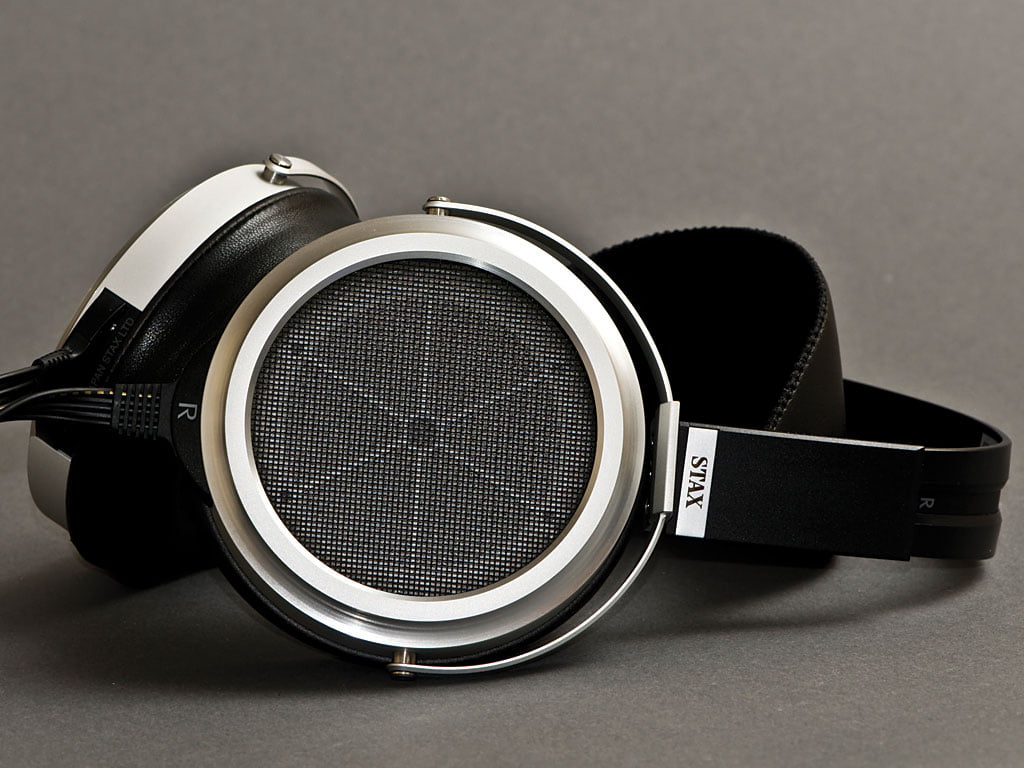It’s the time of year for saving money!
Did you ever notice that when you listen to a really good recording played on a really good and properly set-up System, the speakers seem to “disappear” sonically, and all that’s left is the music “floating” in an approximation of the space in which it was recorded — and a pair of boxes sitting on the floor in front of you, seemingly doing nothing at all? That’s the way it’s supposed to work, and even a pretty good system will do some of it.
 With the great majority of headphones, though, it’s completely different: It’s not that the headphones don’t “disappear” – for the most part, they do – but that, instead of being in front of you, the music usually seems to be coming from somewhere inside your head.
With the great majority of headphones, though, it’s completely different: It’s not that the headphones don’t “disappear” – for the most part, they do – but that, instead of being in front of you, the music usually seems to be coming from somewhere inside your head.
I’m not the first to notice this; I’ll bet you have, too, and so, certainly, have the makers of STAX and AKG headphones, both of which have at, one time or another, come out with models specifically intended to image more like speakers: To achieve that, both the Stax Sigma and the AKG 1000 headphones place their sound-producing diaphragms not directly facing the auditory canal, as almost all other ‘phones do, but a little forward of it, and parallel to a line drawn between your two ears, so that the diaphragms are “facing” you, just as speakers would, and are not playing “into” your ears, but “across” them.
That does pull the image a little out of the center of your head, but they still don’t image the way speakers do. Not even the AKGs, which have their diaphragms pivoted in the vertical plane so that you can customize the angle from which the sound reaches your ears.
 It would be easy to say that headphones simply aren’t capable of accurate imaging, except for two things: 1) As I’ve written before, headphones are a lot BETTER than speakers at creating a feeling of the room that the music was recorded in, and 2) on binaural recordings (a special type of recording made to mimic the way we hear by using two microphones placed in the normal ear positions on a mount shaped like, and of the same size as , a human head), headphones image and soundstage almost PERFECTLY, giving amazing lifelike presentations of the sound’s directional and dimensional relationship to the listener, whether it comes from in front (to whatever distance), to the sides, above, below, or even behind the listener’s head.
It would be easy to say that headphones simply aren’t capable of accurate imaging, except for two things: 1) As I’ve written before, headphones are a lot BETTER than speakers at creating a feeling of the room that the music was recorded in, and 2) on binaural recordings (a special type of recording made to mimic the way we hear by using two microphones placed in the normal ear positions on a mount shaped like, and of the same size as , a human head), headphones image and soundstage almost PERFECTLY, giving amazing lifelike presentations of the sound’s directional and dimensional relationship to the listener, whether it comes from in front (to whatever distance), to the sides, above, below, or even behind the listener’s head.
So, if it’s not an inherent failing, why can’t headphones playing ordinary (non-binaural) recordings be made to image the way speakers do? One possible explanation comes from a Dutch audiophile who recently posted it on Facebook: According to him (at least to the extent that the computer translation of what he wrote was complete and accurate) the problem is that when we listen to speakers, each of our ears hears sound from both of our speakers at the same time, with, of course the left ear hearing more from the left speaker than the right, and vice versa. According to this writer, it is this mix of sounds coming from objects (the speakers) clearly in front of us that give us the clue to perceive the sound as having its origin external to, rather than inside our head. Having said this, he went on to say that the problem with headphones is that there is no such mixing – when we wear headphones, each of our ears hears only the sound from its own earpiece, and none from the other. To fix this, he described a device (and it was here that the translation became hard to follow) that mixed the signals sent to a pair of headphones, both in terms of frequency and amplitude, to give, just as we would hear from speakers, mostly left channel sound, but also some right, from the left earpiece and the opposite (more right channel, and less left) from the right earpiece, with the result that, according to him, speaker-like imaging was, for the first time, available from his headphones.
 This sounded reasonable to me, but to get a second (or perhaps third) opinion, I asked my friend John Curl about it. John was already familiar with the concept and told me that a “blend control”, that would do exactly what that Dutch audiophile had described, was not at all new, and had, in fact been used years ago in a number of preamps and integrated amplifiers, although, he said, for the purpose of adjusting the sound from speakers, and not headphones.
This sounded reasonable to me, but to get a second (or perhaps third) opinion, I asked my friend John Curl about it. John was already familiar with the concept and told me that a “blend control”, that would do exactly what that Dutch audiophile had described, was not at all new, and had, in fact been used years ago in a number of preamps and integrated amplifiers, although, he said, for the purpose of adjusting the sound from speakers, and not headphones.
What weirds me out about this whole thing is that, some years ago, a company marketed and sold acoustically-treated panels to place between your two stereo speakers to “improve stereo imaging”. These were to be positioned so that if you sat directly in front of the emplaced panel, all you’d see would be its edge, running vertically from floor-level to perhaps a foot above your seated ear-level, and the length of it would start a little behind the speakers and run several feet toward you so that it would act as a “wall” — an acoustical barrier between the two stereo channels — and keep the sound of the left speaker from getting to your right ear, and the sound of the right speaker from getting to your left one. According to the panels’ makers, maintaining maximum channel separation is the key to enhanced stereo imaging and their panels accomplished that by, at least to some degree, isolating each of the two stereo speakers into its own separate acoustical environment for as much of the way to your ears as was practical. Although I’ve never heard such panels in use, I do know people who have heard them and they claim that they work.
Even so, I can still see all kinds of potential problems with them: For example, what happens when you have more than one listener in the room? Not everyone can sit directly at the point where the panels will divide the sound evenly; so what will they sound like to listeners off-axis or out of the “sweet spot”?
Even more than that, though, how can it be that more separation (less mixing of the sound from the two channels) can improve the stereo imaging of speakers, but LESS separation (more mixing) can (for everything other than binaural recordings) make headphones image more like speakers?
It’s all very strange, and seems paradoxical. Could this be REAL audiophile voodoo?








